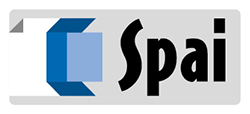Design review and remote progress of work
In every type of project, including the design and construction of automatic machines, activities of control and verification of work progress are carried out. These are moments in which information is acquired, opinions are exchanged, options are evaluated, possible setbacks are assessed and decisions on possible changes are made. There are two types of reviews: Project status report and Design review (or Project review). Both activities are carried out either in person or through reports sent to the client by the person building the machine.
It is clear that both of these control solutions (through physical presence or on the basis of documentation provided by the manufacturer) have inconveniences: Design reviews in the presence imply the movement of people with related loss of time and high costs, think of machines manufactured in Italy and sent to customers in other continents. At the same time, if the checks are carried out through reports by the person who makes the machine, the person who writes them must be trusted. Nowadays, following the COVID-19 pandemic that has shocked the world, these too, like many other activities, need to be reviewed and re-evaluated on the basis of the difficulties in travelling between countries and in direct relations between people. Technology comes to our aid and nowadays, Design review and Project status report can be carried out remotely with video systems that allow a detailed check and eliminate the possibility of misunderstandings or incomplete/inaccurate reports.
“These verification activities are very important and have implications on project times and costs –explains Fabio Farneti, CEO of Spai, -, and cannot be bypassed or reduced to simple exchanges of documentation on trust. Even in times of COVID the level of attention on these phases of the working process must remain very high”.
What is the Project status report
It is a planned control that takes place at predefined intervals during the machine’s construction phase. Usually are identified the salient phases in the life of the project, the key moments and it is at those moments that the Project status report is programmed.
The project status report has these purposes:
- Detect delays in the execution of the work compared to the agreed plan.
- Define possible corrective actions to avoid postponements and delays or other negative effects towards the achievement of the initial objectives.
- Draw attention to the costs actually incurred and to any deviations from the budget (cost estimate plan).
- Limit any corrective actions necessary to avoid or contain budget overspending.
What is the Design review (Project review)
The main purpose of the design review is to analyse and investigate a particular aspect of the project under development in order to highlight critical issues. The design review serves to optimise the product in progress.
The design review has these purposes:
- Identify any risk situations for each aspect of the project (questionable, uncertain design elements, doubtful compliance with market or specific customer requirements, doubtful compliance with laws and standards, not supported by adequate calculations and experience, such as to lead to unresolved problems of cost, manufacturability, reliability, maintainability, for the product that will result from the project).
- Establish for each possible risk the level (qualitative and quantitative) and the influence on the achievement of the project objectives.
- Identify or propose possible actions to limit and/or continuously control the identified risk areas.
- Support the decision-making process.
Design review and remote Project status report, what are the benefits?
“Spai offer his support for this activity as a third party between the client and the machine manufacturer– explains Fabio Farneti, Ceo Spai -. We have in-depth technical expertise and operate in all the main languages. The activities that can be carried out remotely, it should be made clear from the very beginning, must be complementary to the documentation that, in any case, must always be done and shared to keep track of the work in progress”.
The advantages of remote activities
- Immediacy of the review. Often these review stages are composed of an endless sequence of emails with documents and comments adding up to other comments. A videoconference session, with the possibility of sharing documents and drawings on screen, can save time and avoid communication errors.
- Saving money on travel costs.
- Check directly on the machine (via high definition video) the Project status report, the functions implemented or the changes agreed.
Risks to be avoided
There are not only advantages, or rather, the conveniences offered by remote activities can, sometimes, lead us to lose the focus or to abuse them to the point of becoming counter-productive.
- Excessive use: remote meetings must be fixed in time, duration and topics (with an agenda for each meeting). The comfort and convenience of the medium cannot become a pretext for daily calls on every small matter.
- Calls should be used as a review and not as a substitute for documents. It is also possible to clarify and define information during the calls, but it must then be consolidated in documents that create the shared, documented and approved track for the continuation of activities.
Photo by Ronald Carreño on Pixabay




